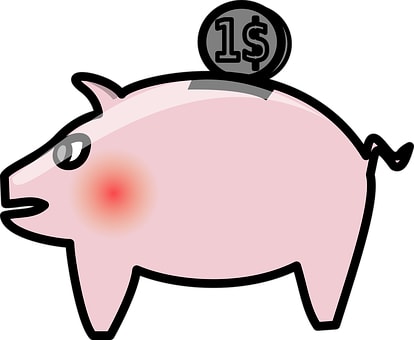Kaizen: This is How Little Improvements Add Up!
You may be familiar with the ‘Double a Penny’ analogy. It goes as follows, would you rather take $1 million dollars now or take a penny and double it every day for 30 days?
Most people would take the $1 million and be done with it. However, if you took the penny a day for 30 days, after 30 days, you would have $5,368,709.02 as you can see below:

Are You Going to Give Me a Penny a Day, Rick?
No, of course not.
I am just trying to demonstrate the power of compounding returns.
“Ok, So Where Are You Going with This?” you ask…
I was just about to get to that if you let me, oh impatient reader!
Geez!
The point is this, in life, many people are looking for the easy way out. Everyone wants everything RIGHT NOW!
I want…
That big house!
A kick-ass job!
A butt that my boyfriend or girlfriend can bounce nickels pennies off of!
The Problem is This…
Most things in life worth getting rarely come that easy or that fast unless you are doing it shady!
There are no quick fixes in life.
Let’s interrupt this actionable and entertaining blog post…
For a Quick Japanese Lesson!
ご挨拶の学生
私はあなたのハンサムな(そして謙虚な)教授です。
今日の言葉は「カイゼン」です
カイゼンは改善のために日本語です。
これは、継続的に改善している活動を指します
Huh!?!?!?!
Ok, I will translate:
Greetings students.
I am your handsome (and humble) blogger.
Today’s word is ‘kaizen’
Kaizen is Japanese for improvement.
It refers to activities that are continuously improving.
Alright, Back to English!
For my Japanese friends, if I butchered your language, I sincerely apologize. But instead of being angry at Rikku (my name in Japanese), please direct your vitriol and negative comments towards my esteemed Japanese professor – https://translate.google.com/

So, kaizen refers to an attitude of continuous improvement. Before we discuss how you can use it, how about…
A Quick History Lesson
But this time in English – copying and pasting into Google Translate is a pain in the お尻!
After the second World War, American auto executives went to Japan to see if they could learn how the Japanese produced so many cars so quickly.
What they discovered was a system of management where the workers on the front line were empowered to stop the line at any time if something was wrong. They were motivated to continuously improve their jobs and the process to achieve better customer satisfaction.
The American executives went home and applied it, with varying degrees of success, then many finally got it right, and it is now commonplace across most industries.
The idea is that small, incremental improvements can add up to big changes over time; it is the same idea as the penny doubling every day over a month analogy.
Why You Should Use It in Your Life
Just like the $ in the bank example, no one gets successful overnight. It takes sustained continuous improvement to get from where you are to where you want to be.
All you need to do is improve just a little bit every damn day…say 1%
‘1%’, you say.
NO, I did not tell you to say 1%, I didn’t mean for you to take it literally.
I meant if you improve just 1% every day, then those improvements will compound just like that penny in the bank!
Small, incremental improvements are less intimidating and more realistic than big, hairy, audacious goals. Simply try to get a bit better every day.

Is There an Approach or Framework You Recommend?
In fact, there is! Actually, I will give you two.
(1) You can either start taking action towards whatever you want to accomplish by taking small steps every day.
So, if you want to be able to do 20 pushups, start with 1, then do 2 tomorrow. Keep making incremental improvement.
Or,
(2) If you want a more scientific approach, there is a tool that you can use to help you in your quest for continuous improvement, it is called the PDSA cycle.
PDSA stands for Plan, Do, Study, Act and it is a way for you to test your improvement efforts.
Plan: Come up with a plan for whatever you are trying to improve
Do: Test it out
Study: Study the results
Act: If you are happy with the results, continue on. If not, try something else
We could get really statistical and scientific on you, but let’s not. For now, use the PDSA cycle as a general way of continuously improving yourself!
Continuous Improvement Never Stops!
That is where I want to leave you today. Continuous improvement does not end with a pot of gold at the end of the proverbial rainbow. It is something that you do for the rest of your life. Remember, not only is it an attitude; it is a way of life!
You can use it as a model for how to live your life.
Because how you do one thing…is how you do everything. Meaning if you half-ass one thing, you will half-ass everything. But if you aim for continuous improvement in one area, it will carry over to other areas!
So, keep those improvements compounding like money in the bank!
次回までは、常に改善してください。いつものように…あなたのマザーファッキングポンプをプライム!
Translation: Until next time, keep improving, and as always…PYMFP!
–Rikku aka Rick
Use It or Lose It – Kaizen
To apply Kaizen in your life, you can:
 Take small, incremental steps toward your goal.
Take small, incremental steps toward your goal.
 Alternatively, you can use the PDSA cycle to test your improvements by applying it as follows:
Alternatively, you can use the PDSA cycle to test your improvements by applying it as follows:
Plan – Come up with a plan for whatever you are trying to improve
Do – Test it out
Study – Study the results
Act – If you are happy with the results, continue on. If not, try something else
When to Use It:
 Always, you always want to be continuously improving in every aspect of your life!
Always, you always want to be continuously improving in every aspect of your life!
What Do You Think?
 Have you ever used Kaizen in your life? What was your experience like? If not, what areas do you think you could apply it to?
Have you ever used Kaizen in your life? What was your experience like? If not, what areas do you think you could apply it to?
If you enjoyed this post, it would mean the world to us if you shared it via any of the social media platforms below!
Popular Previous Posts:
Don’t Break the Chain and Stop Procrastinating!
This is How I Used the 80 20 Rule to Get a Six Pack
Time Batching: How to Save Time and Increase Productivity!
This is How to Overcome a Bad First Impression
References
https://globalwealthprotection.com/know-double-penny-day-analogy/
https://work.qz.com/1183536/the-japanese-philosophy-of-kaizen-can-reinvent-your-daily-routine/
https://medium.com/the-mission/get-1-better-every-day-the-kaizen-approach-to-self-improvement-b79c9e045678
https://en.wikipedia.org/wiki/Kaizen


I agree start with baby steps and continue to grow by modifying and expanding with a goal in mind. Thanks Rick
Hi Eileen, There is no doubt that little improvements or accomplishments every day add up to great things over time! Be good, Rick
Hey Rick. A nice condensed summary of Howie’s continuous process improvement methodology. We used something similar at Lockheed when assembling spacecraft. There’are detailed procedures to follow, but these procedures got tweaked after each build to incorporate suggestions from the product assembly team – the guys twirling the wrenches and tightening the screws.
And now for those who are sometimes anally retentive (such as me), your penny doubling chart contains a nice hidden pattern. With the exception of the initial 1, the last digits of each amount arrange into a repeating sequence of 2,4,8,6.
明日まで、良い一日を。
Hey Dave, Sorry for the late reply. I can only imagine a big organization like Lockheed used something similar, makes total sense. Interesting hidden pattern you found! LOL on your own hidden message. So with that being said, thanks for the comment and 良い週末を!